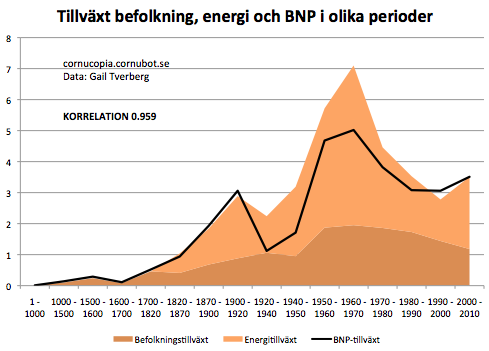Går vi mot inflation eller rent av hyperinflation eller en deflation. Diskussionerna på många bloggar kring vart vi är på väg har varit både het och motsägelsefull. Därför bad jag Nicole Foss motivera om hon står kvar i sin uppfattning att vi möter en deflation inte en inflation. Här är hennes svar:
”Martin, we are already in deflation because the deleveraging has already begun. All we need to do is to look at the falling value of sovereign debt in the European periphery for instance. All the debt monetization attempts (which are a drop in the bucket compared to the size of the outstanding debt) have not only failed to stem the hemorrhaging, but their repeated and conspicuous failure to do so has fed the cycle of increasing fear.
Increasing fear drives increasing interest rates, which increase the risk of default, which further increases fear, which increases interest rates again in a spiral of positive feedback. This is well underway already. Interest rates spreads (between debt perceived to be risky versus debt perceived to be relatively safe) are widening, exaggerating risk distinctions between short versus long term debt, core versus periphery within the eurozone and inside versus outside the eurozone, to name but a few. This is going to continue. Prices lag changes in the money supply, meaning that CPI rolls over after the transition from monetary expansion to contraction. CPI is already falling in a number of places, and this dynamic will spread. The banking system is already insolvent, and that will become increasingly obvious as we move into an era of forced assets sales, and therefore price discovery (mark to market). The momentum will be picking up significantly over the next couple of years, beginning quite soon I think. Watch this space.
Bloggen Cruel Crude publicerade för några dagar sedan en mycket bra artikel av Chris Puplava på Financial Sense som visar det allvarliga läge som den globala ekonomin befinner sig i. Rubriken ”50% av skulderna att betala inom 2,5 år, talar för guldet” är en bra sammanfattning av läget. Dock andas hela artikeln hotet av inflation tvärt emot Nicole Foss uppfattning.
”Vi har tidigare skrivit om om vad som händer när Japans obligationsbubbla spricker
men vad som är långt värre är att de närmaste 2,5 åren förfaller 50% av de 10 mest skuldtyngda nationernas skulder. Detta skriver Chris Puplava om i en mycket läsvärd artikel på Financial Sense som vi här ska sammanfatta.
Chris frågar sig hur länge investerare ska kunna dyka upp vid statsobligationsauktionerna och fortsätta rädda de mest skuldsatta nationerna. Vi menar precis som Chris att de enorma volymer av skulder som förfaller de närmaste åren, framförallt de närmaste 2,5 åren är för stora för att investerare ska kunna täcka dessa. Istället är det sannolikt de 4 största centralbankerna som måste komma till räddningen, dvs US Fed, ECB, Bank of England och Bank of Japan.”
Här är en mycket välskriven och informativ site som belyser fenomenet deflation. Vad är deflation?










Such forward-looking statements involve known and unknown risks, uncertainties and other factors which may cause the actual results of the company to differ materially from the historical results or from any results expressed or implied by such forward-looking statements, including without limitation: national and local economics; business, real estate and other market conditions; the competitive environment in which the company operates; financing risks including access to capital at the desirable terms; property management risks; the level and volatility of interest rates; financial stability of tenants; the company’s ability to maintain its status as a REIT for federal income tax purposes; acquisitions, dispositions, development and joint venture risks; potential environmental and other liability and other factors affecting the real estate industry in general.